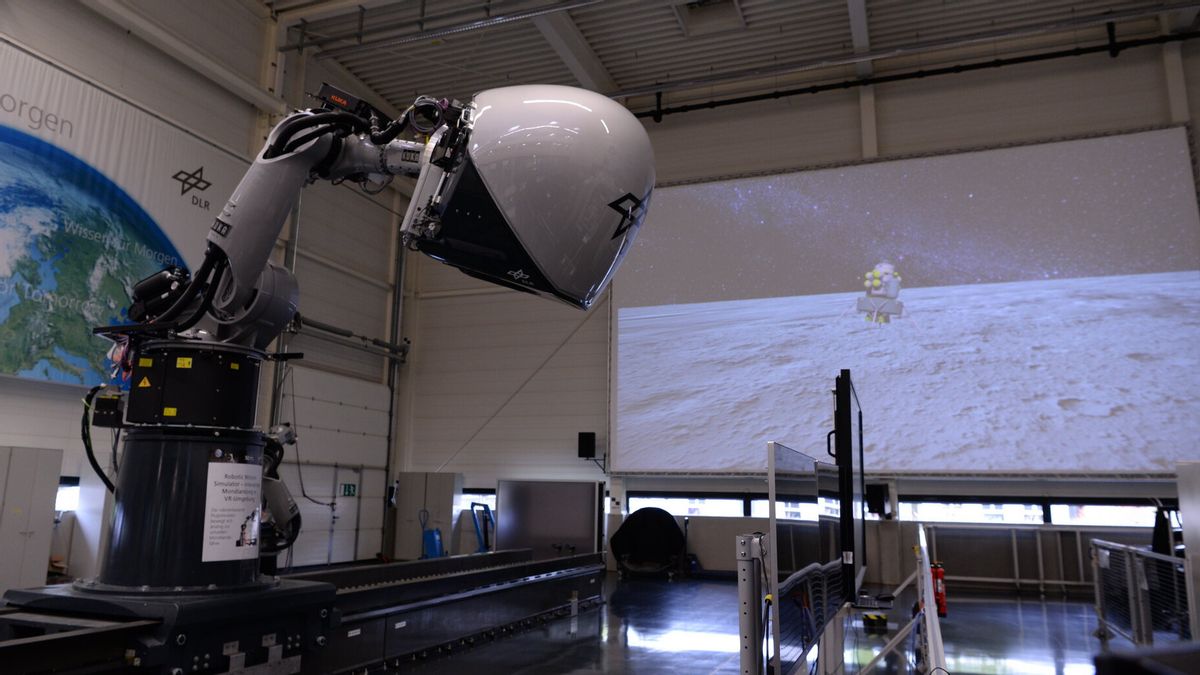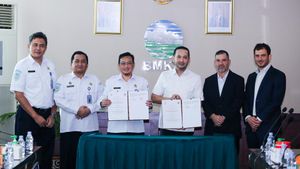JAKARTA - The mission to the Moon in the Artemis program will not only be carried out by NASA, the European Space Agency (ESA) will also take part in the mission, one of which is by sending their astronauts. Now, they're starting to learn how to land safely at the Moon's South Pole.
This simulation is carried out without leaving Earth. In the Artemis mission, astronauts must learn to handle the unique challenges of landing in the Moon's polar environment.
With low-angle sunlight and a deep, permanently closed crater, the Moon's South Pole posed difficulties that Apollo missions had never encountered before.
In order to get hands-on experience with these environments without risking human lives, ESA puts astronauts through their paces in high-tech simulators.
ESA's new simulator, part of an engineering study of flight vehicles dubbed Human-In-the-Loop, doesn't leave the ground or rely on rockets, it's built into a large-scale robotic arm, which is capable of moving and shifting at extreme angles to simulate the effects of commands placed on it. given by the astronaut to the computer.
Launching the official ESA website, Saturday, April 9, ESA astronaut Robert Vittori, who has been to space three times before, puts the simulator through his paces. Based at the German Aerospace Center (Deutsches Zentrum für Luft- und Raumfahrt; DLR), Robotic Motion Simulator is an engineering feat in its own right.
“The simulator is an amazing machine, maybe one of the best I've ever experienced. Today's experiment for me shows that Europe can play a key role in the exploration of the future," said Vittori.
Vittori tested various scenarios, including overriding the autopilot set to land on a rock field, and switching to manual control when the computer encountered an error.
The philosophy of the Human-In-the-Loop program is that the hardware engineering and software design choices for the spacecraft should be made in collaboration with the humans who will fly the machines.
The man-machine interface should be user-friendly and intuitive, so that at critical moments, such as landing on the Moon, there is no surprise or confusion for pilots over the controls.
"We are building the initial design and initial requirements for a human landing on the Moon, with astronauts in a circle to increase the resiliency and reliability of the flight system," said project manager Luca Ferracina.
For your information, ESA has been heavily involved in the Artemis program since its inception. The agency designed and built the Orion capsule service module, which will carry astronauts into lunar orbit, in collaboration with NASA and other international partners.
Meanwhile, ESA astronauts will be on board at least three of the planned Artemis missions to the Lunar Gateway space station in the coming years.
The English, Chinese, Japanese, Arabic, and French versions are automatically generated by the AI. So there may still be inaccuracies in translating, please always see Indonesian as our main language. (system supported by DigitalSiber.id)













